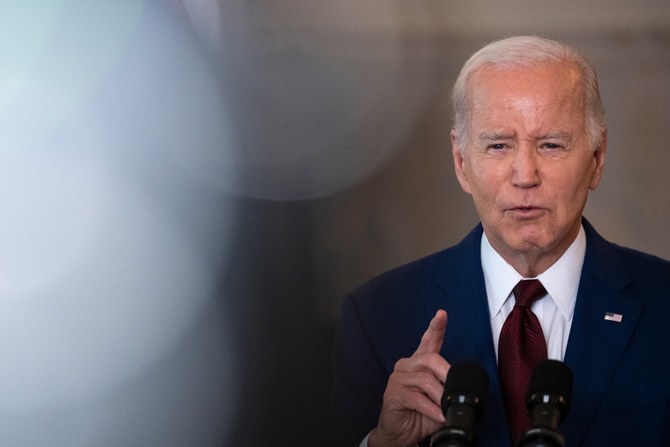Andrew Hammond
Joe Biden began his presidency with the Asia-Pacific region as the focal point of his foreign policy. Yet, almost two and a half years later, the continuing conflict in Ukraine has dramatically recast his international priorities. With the war in Europe now more than 450 days old, the biggest international legacy that Biden will leave as president – especially if he fails to win a second term – will probably be his determined defense of Ukraine. There is also his wider statecraft, which has seen the rebuilding of the fragile Western alliance after the Trump presidency. However, he has not lost sight of a longer-term ambition to intensify the US “pivot” to Asia. For, while Russia remains the major immediate threat to Washington’s security interests, this conflict has done little to alter the administration’s view that China remains the paramount longer-term challenge.
And this is why the curtailing last Sunday of his trip to Asia-Pacific – which was headlined by the G7 Summit hosted by Japan but no longer included his planned trip to Australia – has been so galling for him. It has also badly disappointed the US’ regional allies, which perceive it as giving a fillip to China. His trip was cut short because of continuing US domestic political brinkmanship over the so-called debt ceiling. This closed, at least temporarily, a precious window of opportunity to reset the regional balance in US foreign policy. And it is unclear whether Biden will have a chance to reschedule his Australia trip before next year’s presidential election.
The president’s big Asia-Pacific trip had been intended to see a determined effort to double down on US attention on the region. This would reemphasize the US pivot, which is primarily focused on balancing China’s rise to power, including by increasing America’s military presence and forming security alliances. However, this goal was set back by the cancellation of Biden’s attendance at the Quadrilateral Security Dialogue Summit in Australia. This is a blow for him for multiple reasons, including his hope of serenading Indian President Narendra Modi, whose government may well be reelected for a third term early next year. Washington remains concerned that Modi continues to play a diplomatic balancing act between the West and Russia, having refused to condemn the invasion of Ukraine.
While the Quad – made up of the US, Australia, India and Japan – was initiated in 2007, it has come into much greater focus in the last few years. Some have dismissed the importance of the group, but its relevance as an emerging anti-China alliance has been buttressed by the formation of the UK-US-Australia trilateral security partnership to defend “shared interests in the Indo-Pacific,” with Beijing again the unmentioned key focal point. The main goal of the Quad meeting was to advance a shared vision for a free and open Asia-Pacific, with all four nations in agreement about China. The emerging fault lines in this growing challenge are often cited as being Taiwan and the continuing tensions in the South China Sea, where it is not just Japan and the US, but also other countries such as Malaysia, the Philippines, Vietnam and Brunei, that are in dispute with China regarding these waters, through which some $5 trillion of shipborne trade passes each year.
However, the problem for the US and its allies is broader, as was to be shown by Biden’s now-canceled visit to Papua New Guinea, in between the Japan and Australia legs of his trip, where he was scheduled to meet 18 Pacific Island leaders. Biden was expected to sign defense and surveillance agreements with Papua New Guinea to renew the strategic importance of the nation, which is the South Pacific’s most populous nation. The US goal is to deter Pacific Island nations – which span 40 million sq. km of ocean – from forming deeper security ties with China. Disappointed as Biden will be by the cancellation of the Australia and Papua New Guinea legs of his trip, he put extra emphasis on the G7 in Japan. At the summit on Friday, Saturday and Sunday, there was a broad range of measures announced regarding China. Indeed, one of the most striking elements of the final communique was the focus on economic coercion, which, it argued, “undermines the policies and positions of G7 members as well as partners around the world.” For instance, when Lithuania allowed Taiwan to open a representative office in the capital Vilnius in 2021, many of the Eastern European nation’s goods were banned from entering China.
The G7 announced a new toolkit to “increase collective assessment, preparedness, deterrence and response.” This includes a “coordination platform” to help nations assist each other by increasing trade or funding to any country that is in dispute with China. Meanwhile, the Japanese hosts also discussed with Biden whether he might look to reconsider US participation in the Comprehensive and Progressive Agreement for Trans-Pacific Partnership. This is the trade and investment deal originally intended to lock Washington into a deeper partnership with its allies in the Asia-Pacific region.
It is plausible that Biden may eventually seek to bring the US into this pact, whose members account for about 13 percent of global gross domestic product and have a combined population of about 500 million. However, any such move would very likely need to wait until his second term of office, given the political unpopularity of international trade in some key US states, which he will be conscious of before his reelection campaign in 2024.







